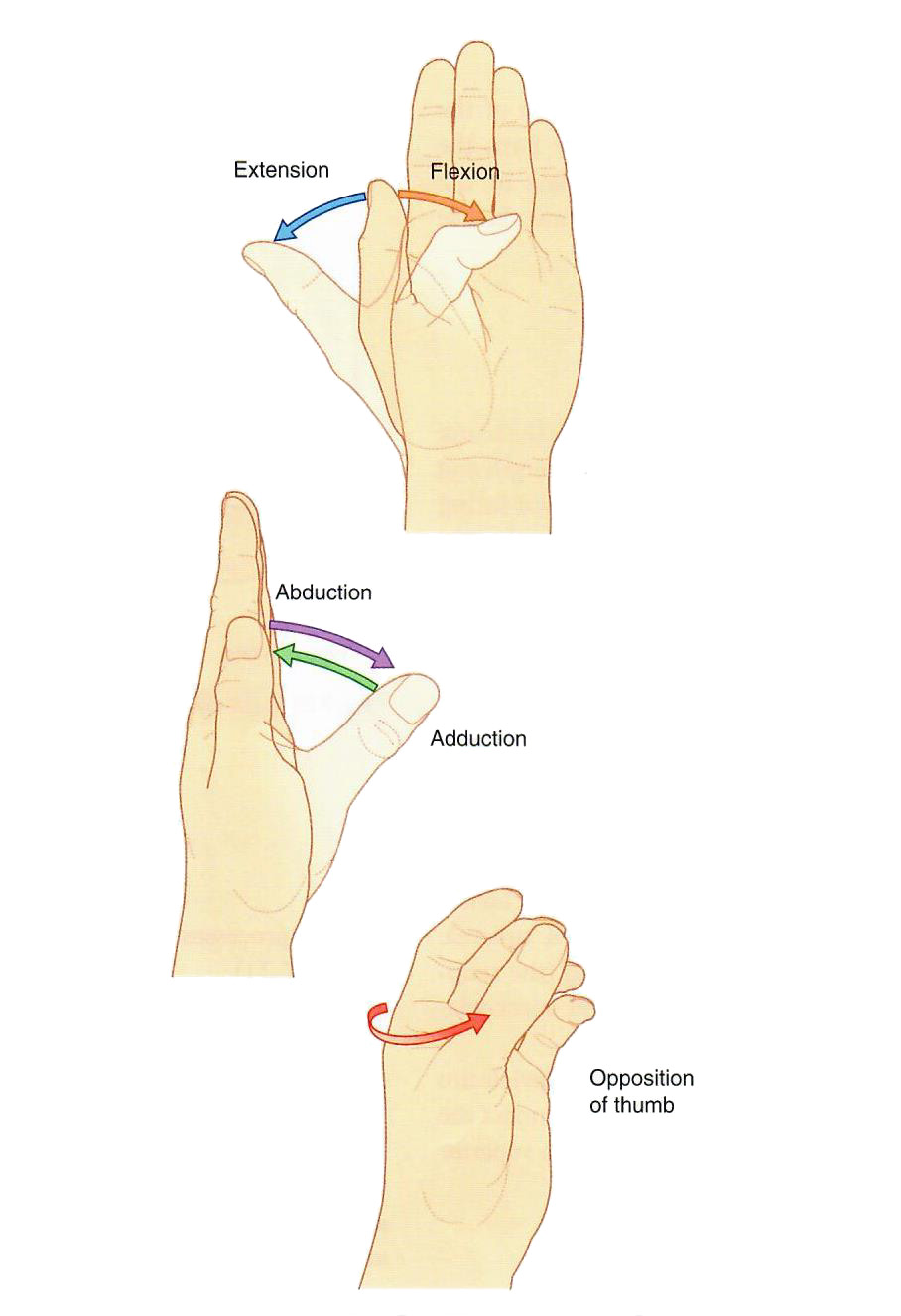
Lab 4 - Module 2 - The Hand: Page 10 of 12
Muscles of the Hand
| The intrinsic muscles of the hand are on the palmar aspect and are innervated by branches of the ulnar and median nerves. They can be divided into three groups: thumb or thenar muscles, the little finger or hypothenar, and the lumbrical and interosseous muscles. The long flexor tendons of the extrinsic muscles arise from in the forearm and pass through the hand to the digits.
|
Thumb or Thenar Muscles
| The short muscles of the thumb: there are four thenar muscles that are chiefly responsible for the movement termed opposition of the thumb. 2 ½ are supplied by the recurrent branch of the median nerve and 1 ½ are supplied by the deep branch of the ulnar nerve. |
| Add the Adductor Pollicis muscle. |
|
Origin (two heads of origin) - Oblique Head- capitate bone and base of the 2nd and 3rd metacarpal bones; Transverse Head- palmar surface of the 3rd metacarpal bone
Insertion - Ulnar side of the base of the proximal phalanx of the thumb Innervation - Deep Branch of Ulnar Nerve (C8, T1) Action - Adduction of the thumb |
| Add the Opponens Pollicis muscle. |
|
Origin - Flexor retinaculum and scaphoid and trapezium bones
Insertion - Lateral border of the first metacarpal Innervation - Recurent Branch of Median Nerve and sometimes a small branch of the ulnar nerve (C8, T1) Action - Opposition of the thumb with the other fingers |
| Add the Flexor Pollicis Brevis muscle. (Not identified in this cadaver) |
|
Origin (two heads of origin) - Superficial Head - flexor retinaculum and trapezium and scaphoid bones. Deep Head - trapezoid and capitiate bones
Insertion - Radial side of the base of the proximal phalanx of the thumb Innervation - Superficial Head - Recurrent Branch of Median Nerve. Deep Head - Deep Branch of Ulnar Nerve Action - Flexes proximal phalanx of the thumb |
| Add the Abductor Pollicis Brevis muscle. (Not identified in this cadaver) |
|
Origin - Flexor retinaculum, scaphoid bone, and trapezium bone
Insertion - Lateral side of base of the proximal phalanx of the thumb Innervation - Recurrent Branch of Median Nerve Action - Abduction of the thumb |
| Opposition is the most important movement of the thumb. Opposition involves extension, then abduction, flexion, and medial rotation and usually adduction. Opposition occurs at the 1st carpometacarpal joint. If the median nerve is severed in the forearm or at the wrist, the thumb cannot be opposed. |
